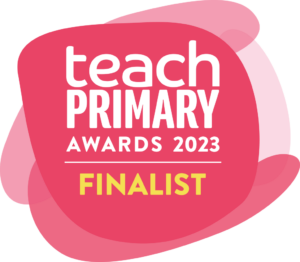You can download the text below as a pdf here.
Welcome to Understanding Humanism!
Our aim is to provide teachers with the subject knowledge and resources necessary to teach accurate, high-quality lessons about humanism and non-religious worldviews. We believe that every young person should have the opportunity to learn about humanism as part of an inclusive education about religion and worldviews, and a wider curriculum that supports young people to understand and make sense of the world around them.

On Understanding Humanism you’ll find a wide range of resources to support you to teach about humanism, a non-religious approach to life shared by millions of people in the UK.
We have divided the humanist approach and understanding into five core areas of knowledge:
You will also find resources to support teaching about a number of other topics connected with humanism and non-religious worldviews.
What is humanism?: More general resources about humanism, including resources to support an introduction to humanism, and on the nature of humanism, how people discover humanism, and humanist organisations.
History and influence: Resources on the history of humanist thought and action, from the ancient world, through the Enlightenment, and to its influence on modern society.
Global humanism: Resources on humanism around the world, including the work of Humanists International, stories from humanists in Africa, Asia, and the Americas, and the challenges faced by humanists in many countries around the globe.
Data: Resources on how many non-religious people and humanists there are in the UK, and on what they believe. These should support students to develop an understanding of the landscape of religion and belief in the UK and around the world.
Humanist ceremonies: Our resources on humanist naming ceremonies, weddings, and funerals can support teaching about the value humanists place on freedom, responsibility, and connections in our lives, and on humanist perspectives on love and death.
Atheism and agnosticism: We have also provided resources on atheism and agnosticism. While these are features of a humanist approach to life, it is important that the study of humanism focuses mostly on the things that humanists do believe in, rather than the things that they don’t. Atheism, agnosticism, and the reasons people might not believe in a god should be explored during any study of religion and worldviews, and these resources are designed to help. However, such an exploration should not take up the available time for learning about humanism as a non-religious worldview.
Humanist perspectives: These provide a humanist perspective on a wide range of topics, themes, and questions included in the Religious Studies GCSE and A level specifications (e.g. animal welfare, the environment, matters of life and death).
This document sets out the core substantive knowledge about humanism that students should learn. This will help them to develop a sound understanding of an example of a non-religious approach to life as part of a rich and inclusive education about religion and worldviews.

Students should be able to apply this knowledge in the following ways
Students should have the opportunity to reflect on the humanist approach, to respond to it critically and creatively, and to consider similarities to, and differences from, their own and other worldviews.
This core knowledge has been sequenced across the age ranges to ensure that each stage expands on the previous, building on students’ prior knowledge in order to provide a coherent narrative.
It is important to note that where we say something is a feature of a humanist approach to life (e.g. treating other people the way we would like to be treated) this is not to claim that all humanists will act this way all of the time. Humanists, like all people, often fail to act in ways that cohere with the things they say they believe, or to live out their values. What we have tried to provide are the features of an approach to life that many humanists say they aspire to, whether or not that approach is lived out in reality. Exploring the lived reality of humanists is an important part of an education about worldviews too.
We have tried to set out the intent: the core knowledge about humanism that students should learn at each age range. As a teacher, the implementation of that is up to you. You are the expert. You know your class, their prior knowledge, ability, and how they learn best. However, we would suggest covering the areas of knowledge in the order indicated above as the content often builds on that covered earlier. To support you, we have also made suggestions on how the core content might be delivered and have provided resources including information sheets, activities, and films. We have also provided assessment activities to support you to measure the impact on students.
It is important to note that the study of humanism will often differ from the study of religions. It is a worldview without a holy text or founding figure, with no festivals, compulsory rituals, places or objects of worship, prayers, hymns, or structures of authority. What humanism shares with religions is that it is an approach to life’s big questions and a way of understanding the world and our place in it that has an impact on how people choose to live.
Resources are available covering each of the five areas of knowledge for ages 5-14.
You may prefer to use these as part of a term’s unit on humanism or you may prefer to interleave these with the study of other worldviews. What is important is that students have the opportunity to develop their understanding of the core features of the humanist approach to life and finish the age range secure in the core knowledge.
Overview: An overview is available for each area of knowledge at each age range. This document highlights in the knowledge outcomes what we feel are the three pieces of core knowledge that students should understand about that feature of a humanist approach to life. Underneath the three pieces of core knowledge we have also identified other important knowledge that students should encounter. You will also find suggestions for resources and activities to support students to learn about this topic. You can follow the resources in the order suggested in a single lesson, or you might want to use them alongside other content over several lessons and add resources and activity ideas of your own. What is important is that students develop an understanding of the core knowledge.
In most cases, the suggested resources and activities in the overview should fit into a one hour lesson. However, in a couple of the overviews for ages 11+ there is probably more suggested material than can easily fit into an hour. Ideally this would therefore be spread over more than one lesson. However, if you do not have time, then you will need to select the most appropriate material based on what your students already know.
We also offer suggestions of resources and activities for ‘Digging deeper’. These can support students to develop a richer understanding of humanism if you have time or if your students are already secure in the core knowledge.
Presentations: The presentations contain slides to support all the other resources in each area of knowledge.
Information sheets: Information sheets are available for students in most of the areas of knowledge. These can be handed out to students to read themselves or shared with the class on a screen. They cover the core knowledge about the humanist approach and often contain quotes and questions.
Activities: These provide students with a task to consider that can support them to explore the humanist approach. Some of these contain instructions for the teacher to lead, others are handouts with instructions for the students to follow.
Films: You will find a variety of short film suggestions that can be used as helpful stimuli to introduce features of a humanist approach to life and to prompt discussion.
Assessment: Frequent assessment can support students’ learning. You’ll find a number of assessment activities to support you, including multiple-choice quizzes and texts with missing words. These can be used at the end of a lesson, as recaps at the beginning of the following lesson, or at the end of a unit.
For ages 14+ and 16+ you will find suggested resources on each of the five core areas of knowledge as well as resources in the additional resource areas. Teachers would do well to ensure students are already secure in the knowledge covered by the resources available at younger age ranges (some of these can therefore be found repeated in the 14+ and 16+ age ranges). Students can then deepen their understanding with the additional resources available, including the humanist perspectives.
Our humanist perspectives cover a humanist approach to a wide range of topics, themes, and questions included in the Religious Studies GCSE and A level specifications (e.g. euthanasia, abortion, and animal welfare).
You may also want to consider using resources from our two free online courses with students over 16. Introducing humanism provides humanist perspectives on life’s big questions, while Humanist lives illustrates stories from individual humanists around the globe.
Before planning your teaching, it can be helpful to look at the core knowledge in the earlier age ranges and assess whether your students are likely to have had the opportunity to learn it. There is some repetition at each age range to support reinforcement and progression. However, if your students are at the younger end of the age range and/or have not encountered humanism before, you may want to consider using or adapting some of the resources from an earlier age range and ensuring the relevant knowledge is secure before moving on to the next stage.
If you only have limited time with students aged 5-7, then we would suggest concentrating on the following areas of knowledge:

We have divided humanism up into five areas of knowledge that cover the beliefs, values, and goals which are typically central to a humanist approach to life. This has been done to help break up the humanist approach to life into manageable chunks of learning. If teaching a term’s unit on humanism, for example, this would be one way to break up the content week by week, with some time left over for review and assessment. The areas of knowledge allow an exploration of the humanist perspective on five big questions about how we make sense of ourselves and the world around us, and how we might choose to live. These five questions lie at the heart of understanding a person’s worldview.
The table below shows these five core areas of knowledge and the content to be studied within each of them.
| The human being |
|
| Understanding the world |
|
| The one life |
|
| Humanist ethics |
|
| Society |
|
Some of the concepts above will obviously stretch younger students in primary school. However, each area can still be tackled in a way that helps children begin to develop their understanding.
For example:
Time should be made to explore where diversity lies within humanism and students will benefit from opportunities to reflect on the humanistic approach, to challenge it, investigate and interrogate its truth claims, and to compare and contrast it to other worldviews (religious and non-religious).
Across these blocks of knowledge there should be the opportunity to explore the impact and influence of humanism on the modern world, be that through our evolving understanding of human nature, scientific progress, art and literature, shifting moral norms, the work of humanist organisations, or the changing demographics of religion and belief.
A sound understanding of the core blocks of knowledge above will also support students to consider humanist perspectives on contemporary ethical debates (e.g. assisted dying, war, animal welfare). There is no single, fixed ‘humanist’ answer to such questions (although on some issues there will often be a significant amount of consensus). Nonetheless, study of the five areas of knowledge should provide students with a sound understanding of those aspects of a humanist approach (e.g. the value placed on evidence, empathy, happiness, and autonomy) that might influence the way a humanist would approach such questions and the conclusions they might reach (you’ll also find personal stories of individual humanists demonstrating this approach in their decision making in the humanist perspectives).
The five areas of knowledge follow a similar structure to Humanists UK’s free online course Introducing humanism: non-religious approaches to life, which is a great way for teachers to develop their subject knowledge of humanism.
It is important that the beliefs and values in the core knowledge are not presented as a doctrine or creed that humanists must sign up to, or a set of instructions on how a humanist must behave. Instead, they describe the typical beliefs and values held and the approach taken by humanists. It is perhaps more appropriate to understand ‘humanist’ as a descriptive label that can be applied to those who adopt such an approach to life. There are people with these beliefs, values, and goals, and the word ‘humanist’ can be used to describe them.
In that sense, the word operates differently from many religious labels. A Christian, Muslim, or Hindu will normally adopt the label (or be labelled) as (or before) they develop the associated beliefs and practices. In contrast, a humanist will typically discover the label after (sometimes long after) they have already formed the associated beliefs. There is no compulsion to self-identify. While around five per cent of the UK population adopt the label ‘humanist’, many more will hold a humanist worldview but will not use the word to describe themselves.

Humanists are not all the same. We have tried to focus on the beliefs, values, and goals where you will typically find a large amount of agreement between humanists and humanist organisations. However, there may be disagreements on the level of conviction, priorities, and approach. For example, while humanists will generally agree that it is possible to lead good, happy, and meaningful lives without religion, there will be differences of opinion on how this can best be done. There is no one single humanist way to live. We have tried to include individual voices. However, none speak for all humanists.
Sometimes a little simplification is necessary to introduce new ideas and concepts to younger students to better prepare them to make sense of the more complicated reality later. However, it should be made clear to students that, like in all worldviews, there is diversity within humanism. As students develop their understanding, their learning about the core features of a humanist approach to life should be combined with learning about the messier reality of religion and belief.
Not all humanists will be aware of the historical origins of humanist ideas or the philosophical reasoning used to justify humanist beliefs. However, many who discover the history and philosophy will recognise their sympathy with, and often get reassurance from, the greater humanist story.
Understanding Humanism does not pretend to present the final word on humanism. Humanism is an ongoing conversation. It is an approach to life open to change as we develop our understanding of the world around us, human nature, and what supports the wellbeing of sentient life.
Language and labels can be messy. There will be people who use the word ‘humanism’ to mean something different (this is particularly the case if we look to history). Sometimes that usage will have a connection to the humanism described in Understanding Humanism. However, in other cases people may be using the same word to describe something completely different. There is nothing wrong with that, but it is important that students are aware of when the word is being used differently.
What we have tried to do with our resources is present humanism as it is understood by most people who describe themselves as humanists and by humanist organisations around the world today. That is a non-religious approach to life. There may be other ‘humanisms’ but those are not the ones we are describing here.
Humanists UK
39 Moreland Street
London EC1V 8BB
education@humanists.uk
@HumanismEdu

© Humanists UK 2025. Registered Charity No. 285987
humanists.uk | Privacy
Illustrations by Hyebin Lee